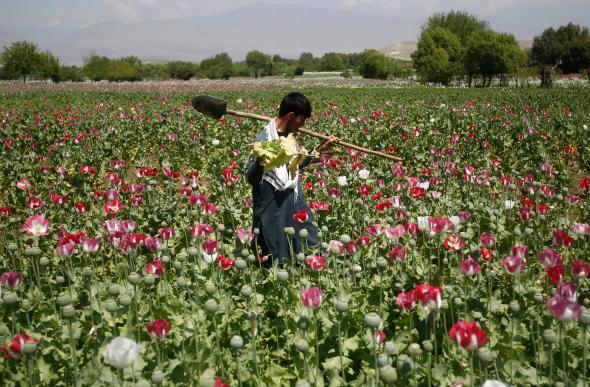The United States has spent $7.6 billion on counternarcotics programs during its 13-year occupation of Afghanistan, the office of the Special Inspector General for Afghanistan Reconstruction announced today in a critical report that cites United Nations Office on Drugs and Crime statistics indicating Afghan opium poppy production reached its highest level ever in 2013. From the report:
According to the United Nations Office on Drugs and Crime (UNODC), Afghan farmers grew an unprecedented 209,000 hectares of opium poppy in 2013, surpassing the previous peak of 193,000 hectares in 2007. With deteriorating security in many parts of rural Afghanistan and low levels of eradication of poppy fields, further increases in cultivation are likely in 2014.
To put those numbers in context, $7.6 billion over 13 years is about $585 million of counternarcotics spending annually on an area that is roughly as large and as populous as Texas (and has been occupied by as many as 100,000 U.S. troops). The United States federal government spends about $9 billion a year on domestic law enforcement activities related to drug control. Afghanistan was the world’s largest producer of opium before the American occupation and remains so now.
The Washington Post profiled Afghanistan special inspector general John Sopko last year, writing that the energetic investigator “has turned a failed agency into the bane of the existence of American bureaucrats scrambling to bring the war to a dignified end.”
Opium can be turned into heroin or morphine or simply bought and smoked on its own in the parking lot of a Phish concert. (It’s addictive in any form.)
